Description
So, what do you want to communicate with your elephant mural?
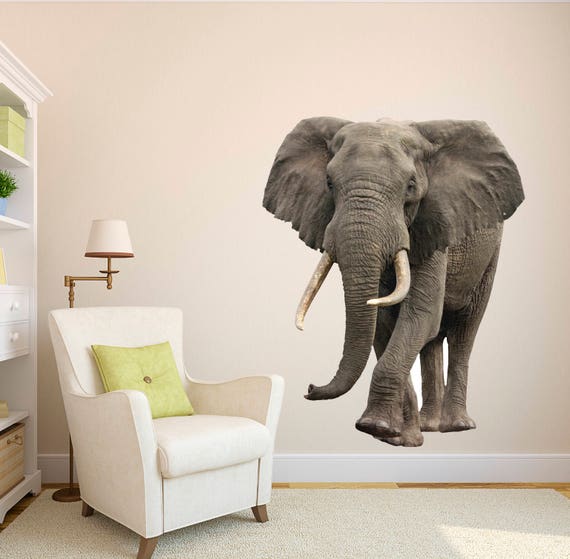
In choosing your elephant mural take care to have the right image.
Our catalog of elephant murals offers you a large assortment of photo wallpaper that you will find here one to suit your taste.

Wallpaper Kenya advises using such wallpaper to quickly and inexpensively change the design of your house, without making any major changes.
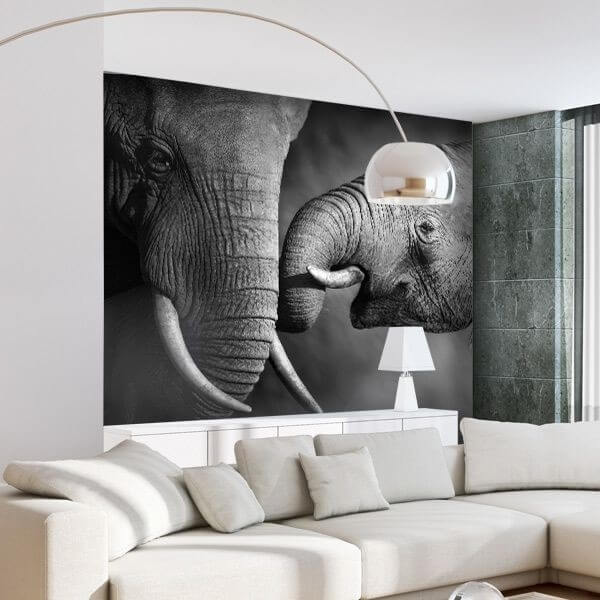
If you want to decorate your apartment, house, or office, then a good solution would be to pay attention to the elephant photo mural wallpaper.
They are distinguished by quality, durability, and reliability.
And are ideal for different types of rooms and are considered versatile.
History of the Elephant Mural in Art
The elephant mural has been a part of art for centuries, with the earliest known examples dating back to the ancient Egyptians.
Elephants have been depicted in art since the dawn of civilization, and their presence in murals has been documented in many cultures throughout history.
Egypt
In ancient Egypt, elephants were often depicted in murals as symbols of strength and power.
They were often associated with the gods and goddesses of the time.
And were often used to represent the Pharaohs. The ancient Egyptians also believed that elephants were a symbol of fertility and abundance.
India
In India, elephants have been a part of art for centuries. They were often depicted in murals as symbols of strength, wisdom, and protection.
Elephants were also used to represent the gods and goddesses of the time and were often used to represent the kings and queens of the time.
China
In China, elephants were often depicted in murals as symbols of luck and prosperity.
They were also used to represent the gods and goddesses of the time and were often used to represent the emperors and empresses of the time.
Europe
In Europe, elephants were often depicted in murals as symbols of strength and power.
They were also used to represent the gods and goddesses of the time and were often used to represent the kings and queens of the time.
In the modern era, elephants are still used in art as symbols of strength, wisdom, and protection.
They are often used to represent the gods and goddesses of the time and are often used to represent the kings and queens of the time.
Elephant murals are a timeless form of art that has been used for centuries to represent strength, wisdom, and protection.
They are a reminder of the power and beauty of nature and are a reminder of the importance of preserving our natural resources.
How to choose the perfect elephant mural
When it comes to decorating your home, there is no better way to make a statement than with an elephant mural.
Because elephants are majestic creatures that evoke a sense of awe and wonder.
And a mural featuring these gentle giants can be a great way to bring a touch of the wild into your home.
However, with so many different designs and styles to choose from, it can be difficult to know which one is the perfect fit for your home.
Tips to help you choose the perfect elephant mural for your home
First, consider the size of the wall you are looking to cover.
Elephant murals come in a variety of sizes, so you will want to make sure you choose one that will fit the wall you have in mind.
If you are looking to cover a large wall, you may want to opt for a larger mural design with more detail.
On the other hand, if you are looking to cover a smaller wall, you may want to opt for a smaller mural with less detail.
Color scheme
Next, consider the color scheme of the room you are looking to decorate.
Elephant murals come in a variety of colors, so you will want to make sure you choose one that will complement the existing color scheme of the room.
If you are looking to add a pop of color to a neutral room, you may want to opt for a mural with bright colors.
On the other hand, if you are looking to add a subtle touch of color to a bold room, you may want to opt for a mural with more muted colors.
Interior decor styles
Finally, consider the overall theme of the room you are looking to decorate.
Elephant murals come in a variety of themes, so you will want to make sure you choose one that will fit the overall theme of the room.
If you are looking to add a touch of the wild to a modern room, you may want to opt for a mural with a jungle or safari theme.
On the other hand, if you are looking to add a touch of elegance to a traditional room, you may want to opt for a mural with a more classic theme.
By following these tips, you can easily find the perfect elephant wallpaper mural for your home.
With so many different designs and styles to choose from, you are sure to find one that will fit the overall theme of your room and make a statement.
Main features and benefits of an elephant mural
To get a stylish home, you can customize your elephant mural.
Custom wallpaper murals are not only considered very convenient but also have many other advantages:
- Excellent image quality is the main advantage of photo wallpapers. They are made using special technologies, do not fade or fade, and do not deteriorate over time.
- Unlike ordinary wallpapers, these have increased durability. Made of silk fabric, they are difficult to tear or scratch.
- Elephant mural wallpaper helps to hide the wall defects of the room suck as cracks and unevenness of the walls. And they also visually increase the space.
- You can apply custom-made elephant mural wallpaper to different styles of home rooms, with different types of furniture or decorations.
- The price of the elephant photo wallpaper from Wallpaper Kenya at 2000 per square meter all-inclusive is low and will suit your budget.
Elephant murals create an atmosphere of coziness and comfort in your room, relax and give your eyes a rest.
At the same time, they are suitable for the different tastes of the owners.
Add a unique and eye-catching feature wall
Installing an elephant wallpaper mural in your home can be a great way to add a unique and eye-catching feature to any room.
Not only do these murals provide a stunning visual effect, but they also offer a range of benefits that can help to improve the overall atmosphere of your home.
Create calmness and tranquillity at home
One of the main advantages of installing an elephant wallpaper mural is that it can help to create a sense of calm and tranquility in any room.
Elephants are known for their gentle and peaceful nature, and having a mural of them in your home can help to create a calming atmosphere.
This can be especially beneficial in bedrooms, living rooms, and other areas of the home where relaxation is desired.
Add a touch of sophistication to any room
In addition to creating a calming atmosphere, an elephant wallpaper mural can also help to add a touch of sophistication to any room.
The majestic beauty of these animals can help to create a sense of luxury and elegance in any space.
This can be especially beneficial in formal areas of the home, such as dining rooms and living rooms.
These murals can be customized to fit any size or shape of the wall, and they can be used to create a truly unique and eye-catching feature in any room.
This can be especially beneficial in areas of the home that are often overlooked, such as hallways and entryways.
Different types of Elephants
Remember there are 3 different species of elephants in the world.
These are the African Savannah elephant, the African Forest elephant, and the Asian elephant. Elephants are known for their large ears, trunks, and tusks made of ivory.
But it is not all elephants that have tusks.

Do you know that elephants are the world’s largest land animals? A Male African elephant can reach 3m tall.
It can also weigh between 4,000 -7,500 kg. But Asian elephants are slightly smaller, reaching 2.7m tall and weighing 3,000– 6,000.
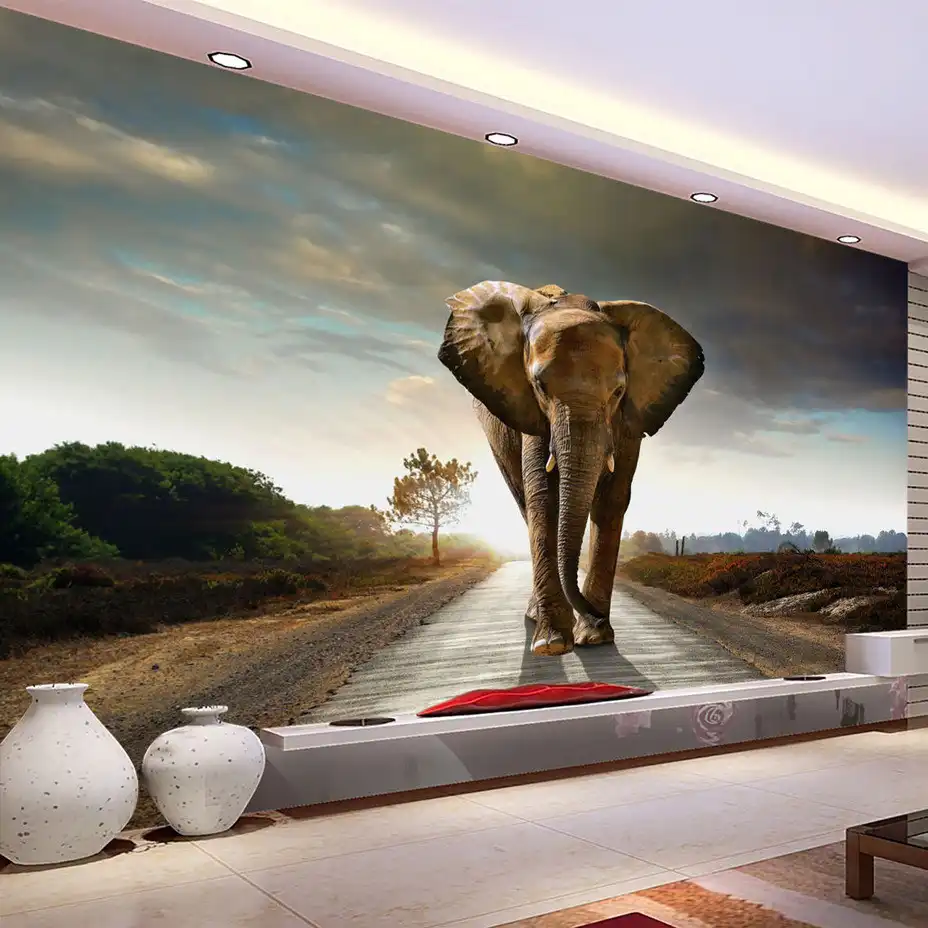
3) Female Asian elephants usually lack tusks. If you see one with tusks—in this case, called “tushes”— they are barely visible, and only seen when the mouth is open.

The elephant, one of the biggest and strongest animals on our planet is majestic and therefore it is known as a Royal Animal.
They have a positive symbolic meaning of good luck, power, success wisdom, and experience.
Because elephants are highly social animals, they are also considered to be a symbol of loyalty. As well as a symbol of companionship and unity.
Plato once said that everything you need to know about life can be seen in elephants. They are tender, strong, silly, and smart all at the same time.
Therefore an elephant mural will tug at our emotions and, perhaps, we at elephants’ emotions.
When you watch any elephant closely you’ll quickly notice intelligence in its eyes. As well as the sense of playfulness.
Elephant Meaning for Human Being
They are recognized for their compassionate and altruistic treatment of each other.
And they have a great deal in common with human beings.
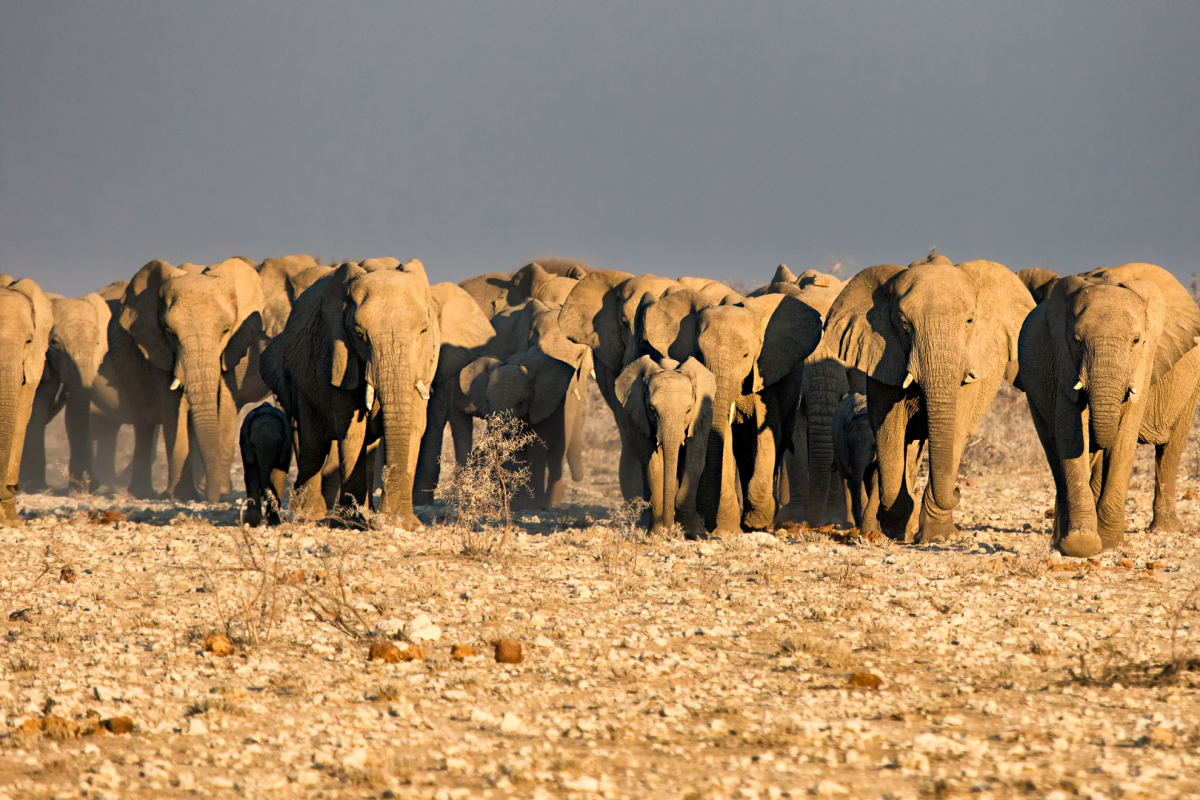
- Humans and elephants have evolved the largest and most complex brains of any land mammal. You know, we become aware of the world around us through our brains. Our brains make us resourceful, dynamic, and adaptable
- You cherish relationships and family, and so do elephants.
- Our offspring can benefit from a long childhood where they are taught all of the practical life skills. Elephants do the same.
- We both elephants and human beings dwell in communities and tribes
- These animals do have memories, remember things, and have felt more like us. There is seen in the defense of their kind. Also, they show great affection and love toward each other. Therefore, elephants signify parent care, companionship, loyalty, and community.
There are good reasons why we need to stop cutting down forests and killing elephants for ivory.
Elephants are very important in maintaining ecosystems in good balance.
“Tusker”, with the elephant in the logo Mural
The famous ‘‘Tusker’‘ Mural with the elephant in the logo is one of the symbols of this Kenya.
And is it the best-selling beer in East Africa? Few, however, know the tragic consequences that led the brewery to call itself such a company.
The Tusker Lager was officially produced and marketed in 1929.
But, for about ten years in Kenya, the beer produced in the then-British Empire Cologne had been drunk.

Among the first settlers who came to seek fortune in Africa, after the construction of the Mombasa-Nairobi-Kampala railway, there were several “pharmacists”.
Many of them dedicated themselves to the cultivation of tea and coffee.
While others had immense plantations of corn, fruit, and vegetables.
The Hurst brothers, Charles and George, were farmers but also experienced brewers at home.
After hoarding a nice bunch as gold hunters, they decided to invest their earnings in a brewery. They officially registered their company on December 8, 1922, under the name of “Kenya Breweries”.
Success was immediate, only the Stanley Hotel, the most prestigious hotel in Nairobi, ordered its crates and coffers.
After a year Charles and George were ready to launch a real “brand” on the market, to reach the whole country.
George was known as a savannah lover and great game hunter.
The Tusker Elephant Mural as a National Emblem
Just in the year of the opening of “Kenya Breweries” she had found herself face to face with a lion and saved herself by miracle, bringing only a few wounds.
 During a hunting hunt in 1923, however, intent on taking pictures of a male elephant and his wonderful tusks, he came too close to the specimen, which was put on him with all his strength and killed him walking on it.
During a hunting hunt in 1923, however, intent on taking pictures of a male elephant and his wonderful tusks, he came too close to the specimen, which was put on him with all his strength and killed him walking on it.
The large male elephants of East Africa are known as “Tuskers”.
In his memory, Charles Hurst decided to call their first larger “industrial” Tusker.
Branding and advertising started in 1924. But the Tusker Lager with its famous 500 ml bottle was officially produced in 1929.
The Elephant’s Beer was a successor in 1935. And after buying also a brewery from the then Tanganyika, the company became “East African Breweries”.
In 1938 Tusker won the first of many awards in international competitions for this type of beverage.
Since the tragic end of George Hurst, today the great elephant stands out in all the bars, restaurants, and supermarkets of Kenya.
And is one of the emblems of this country, portrayed on T-shirts, glass holders, tablecloths, and as wall murals of every city and remote Kenyan village.


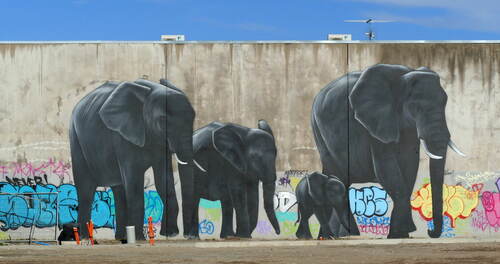

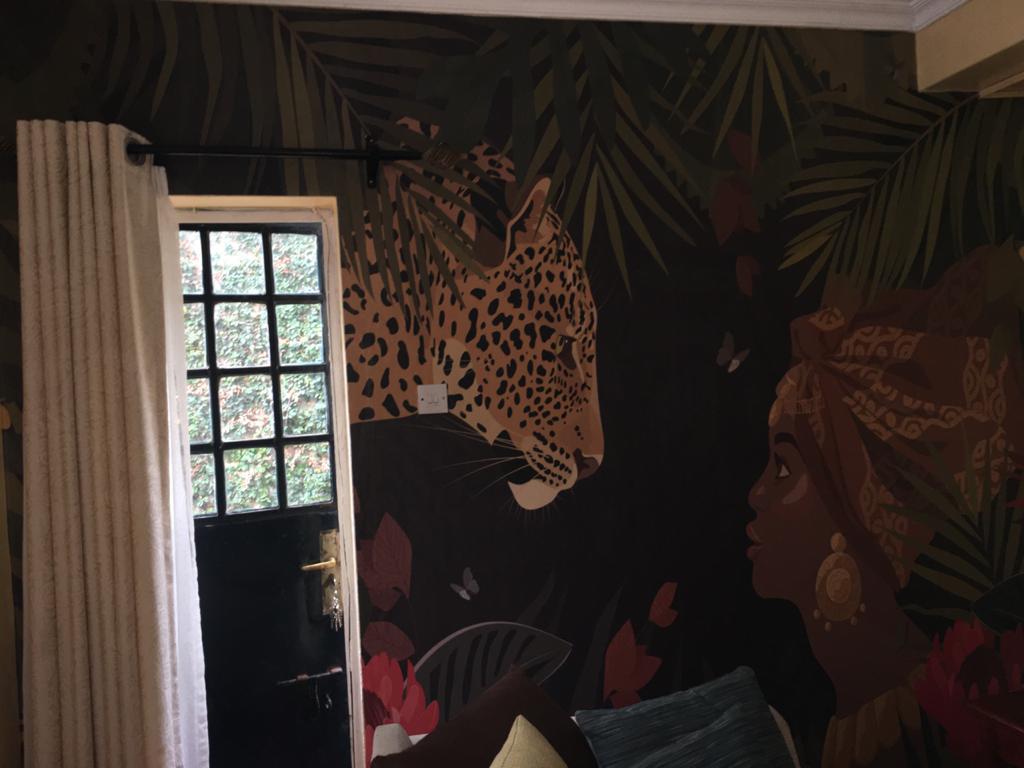
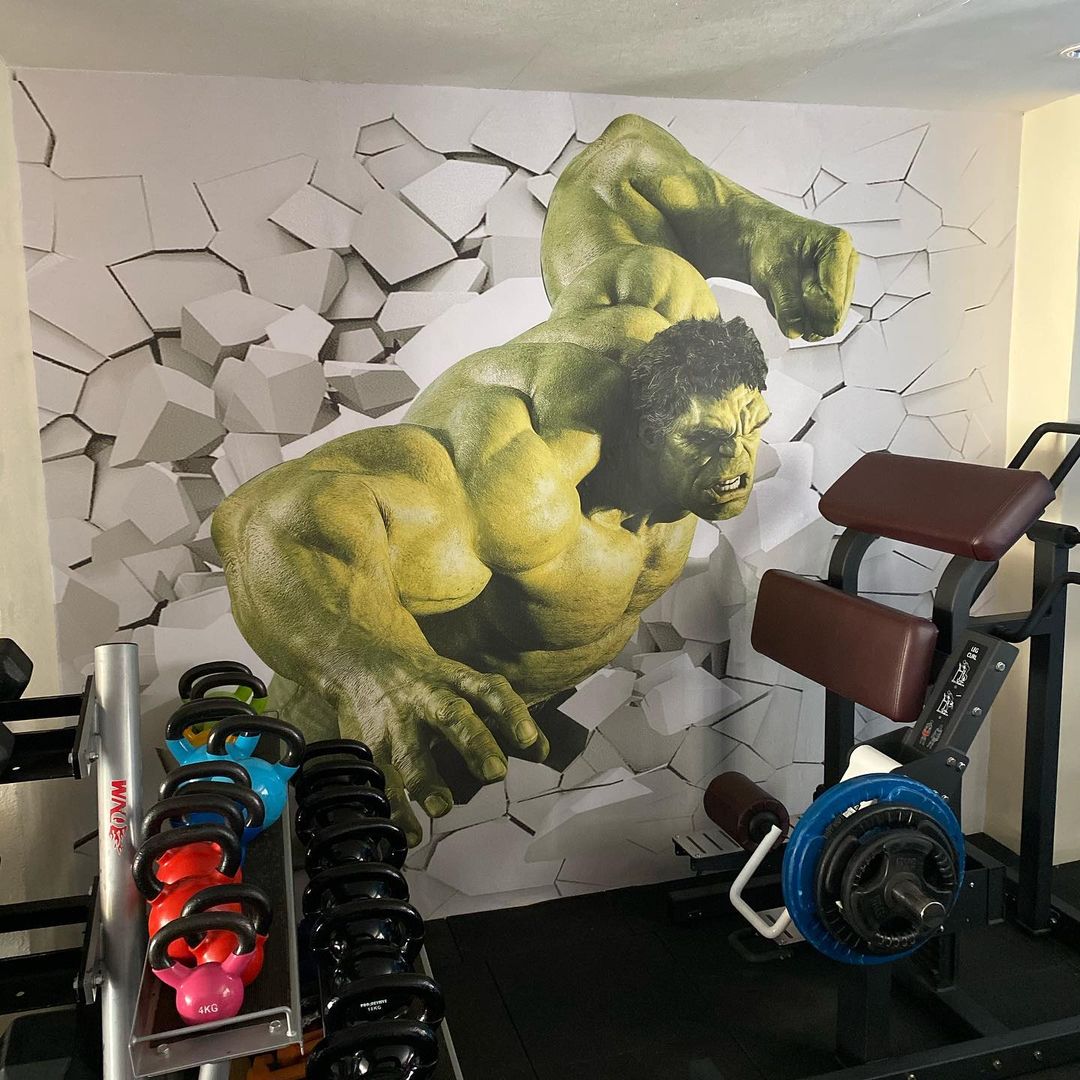
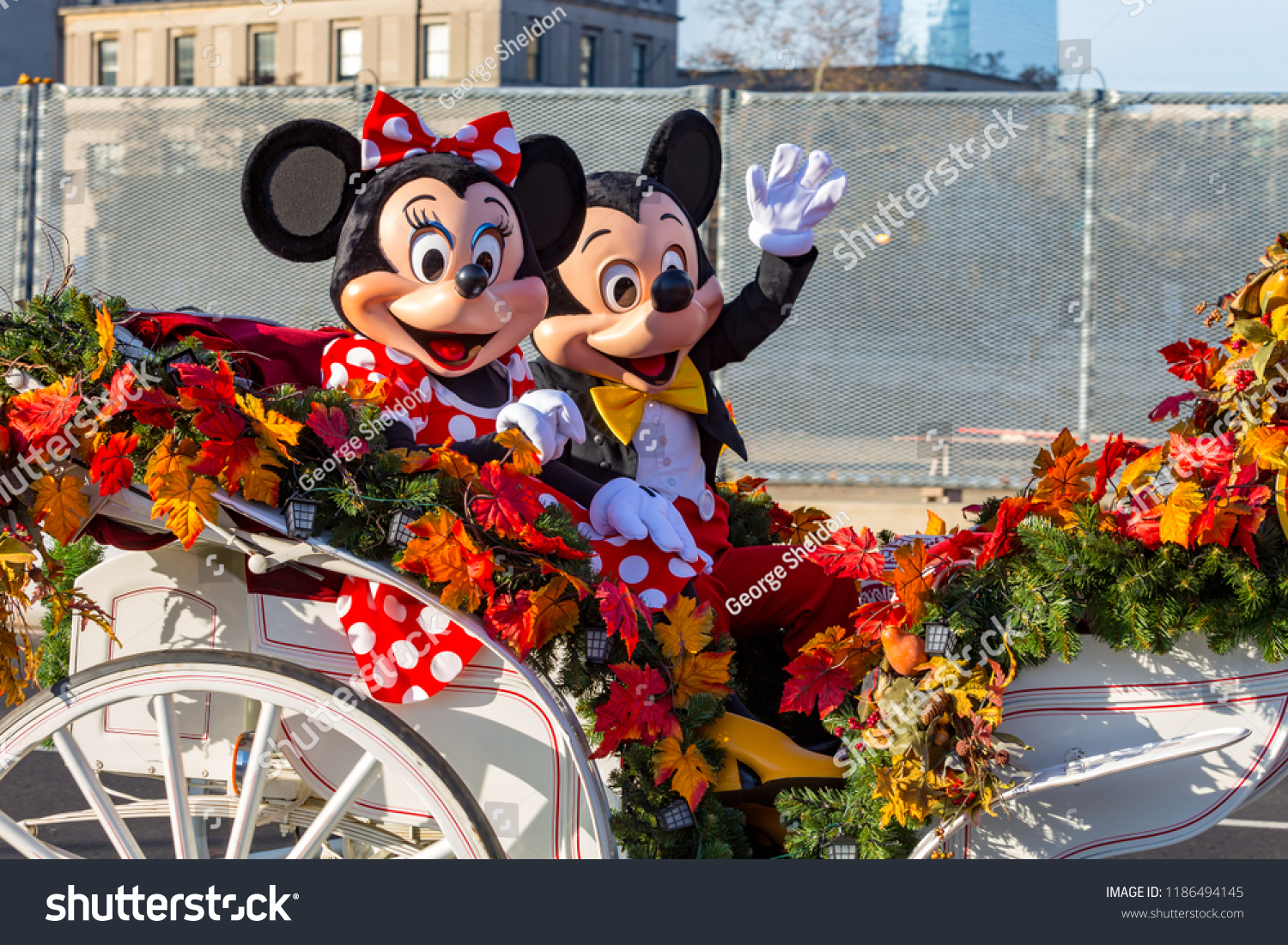


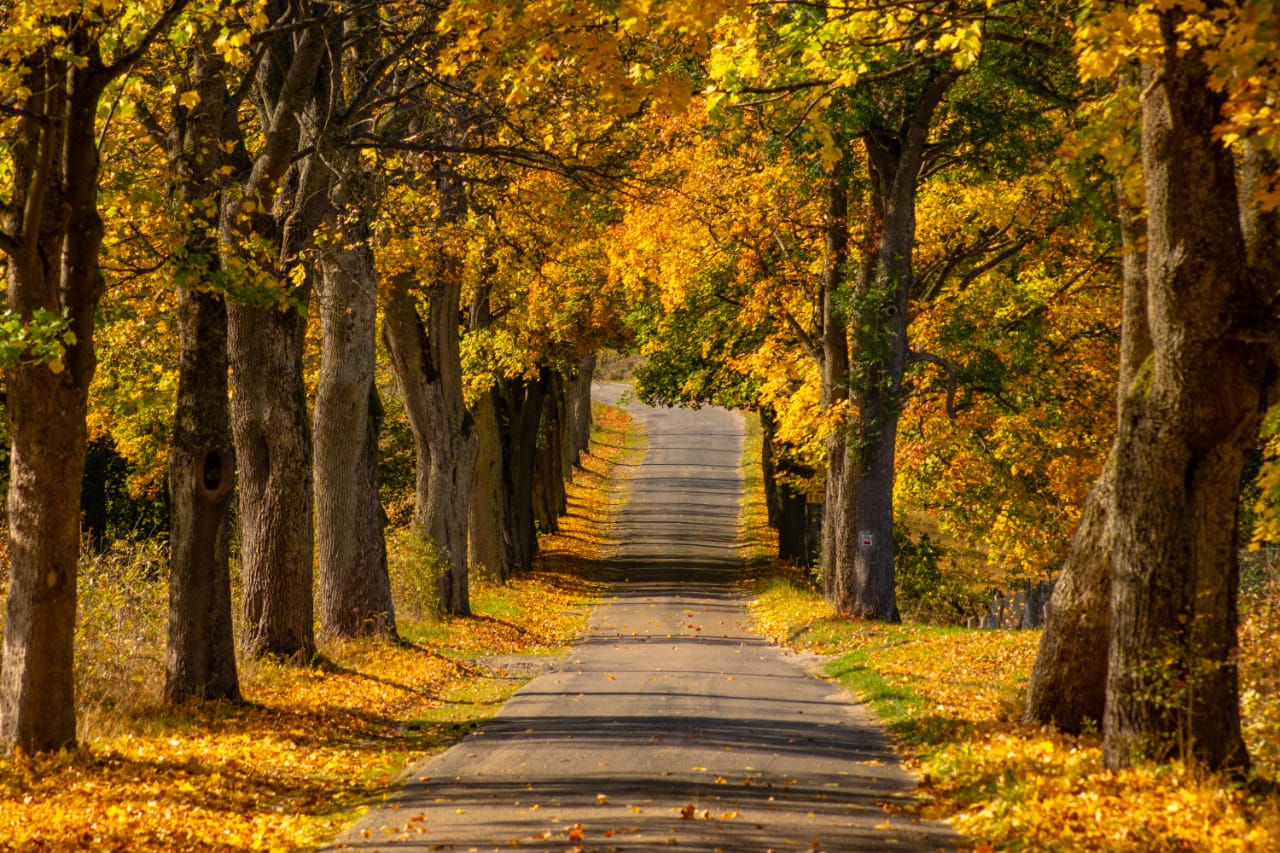

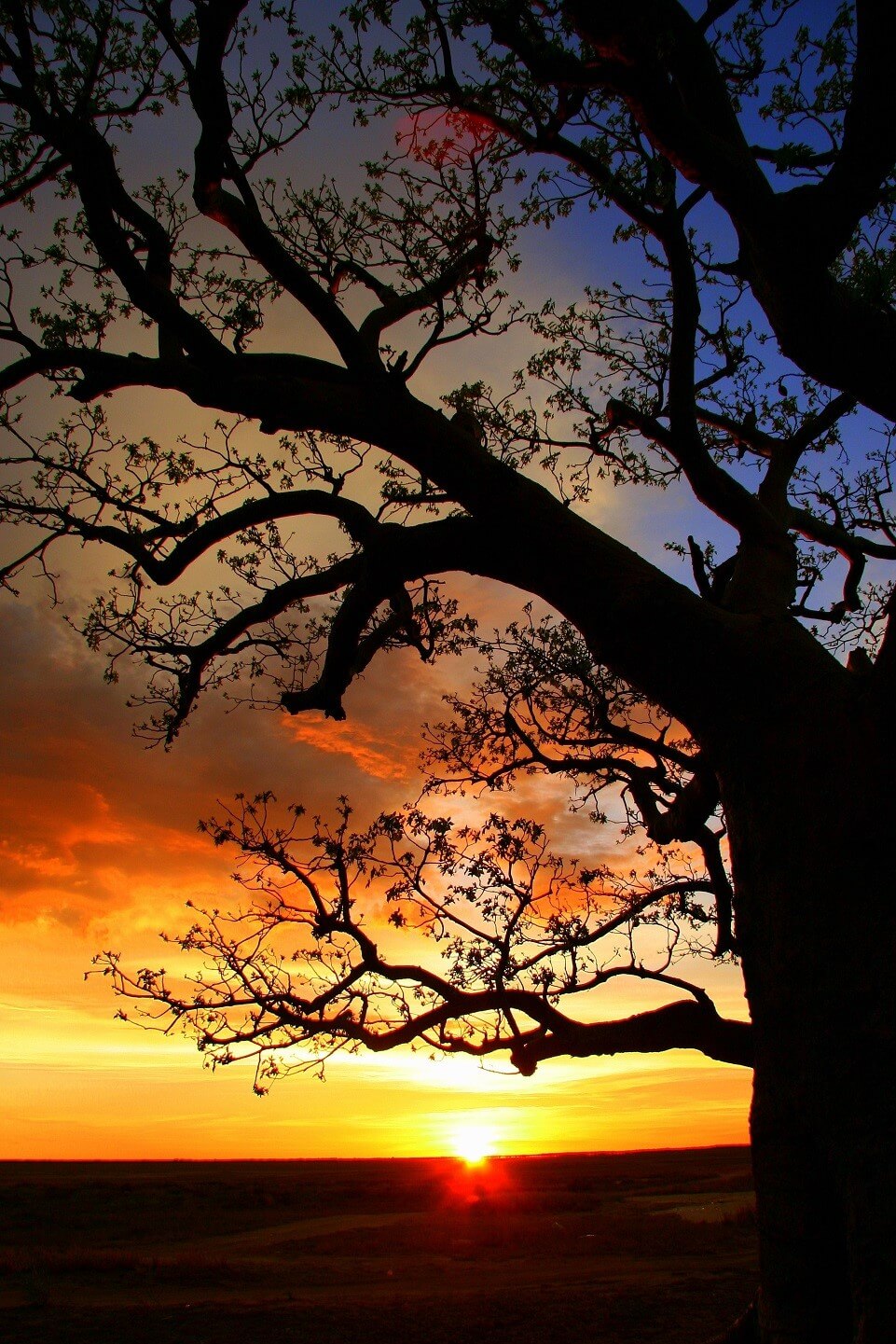
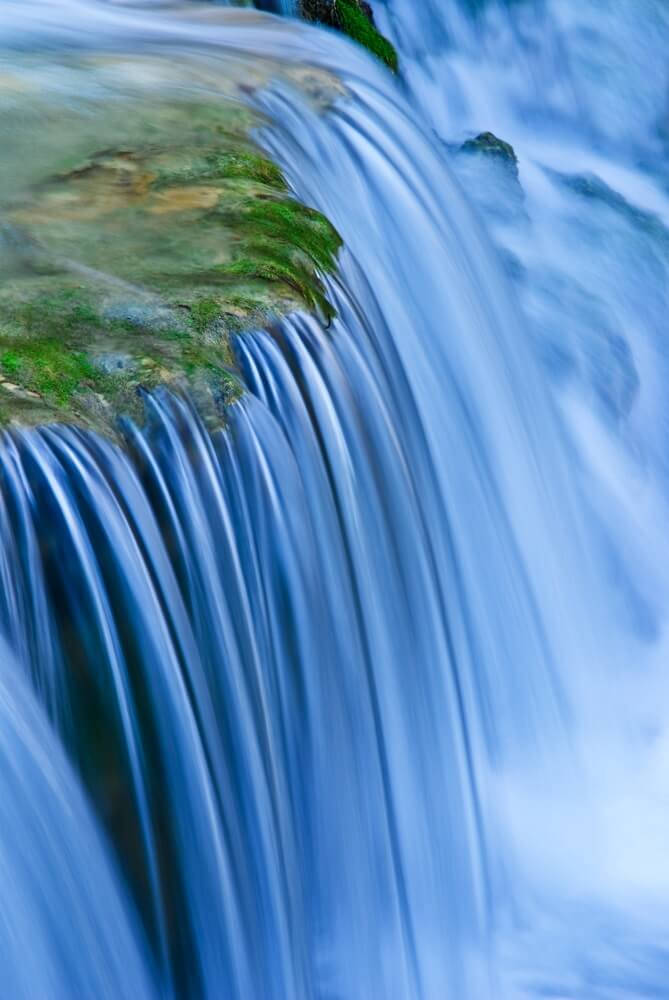
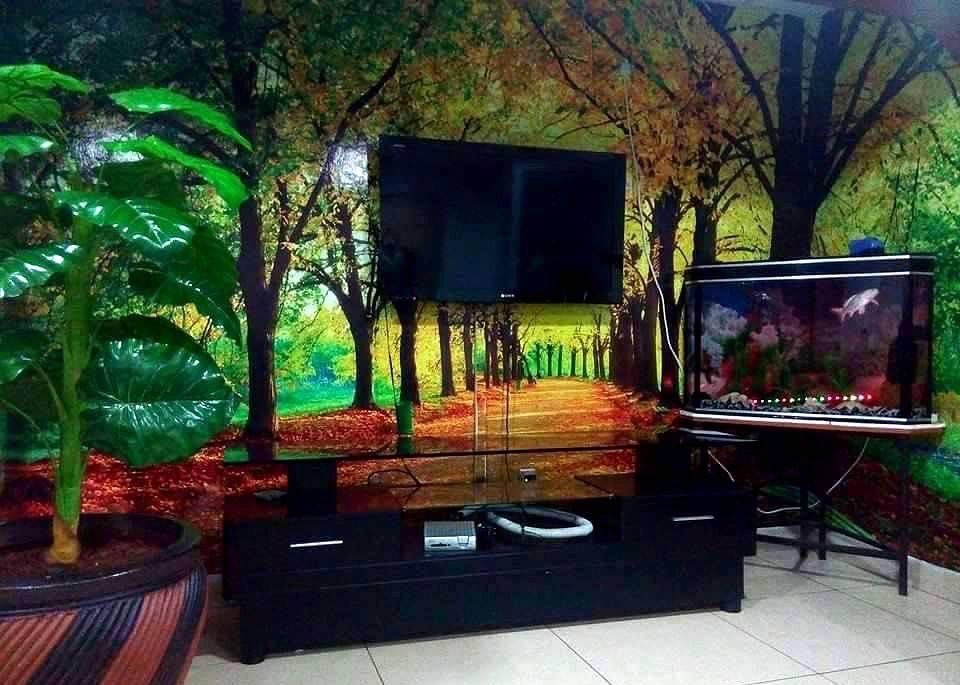

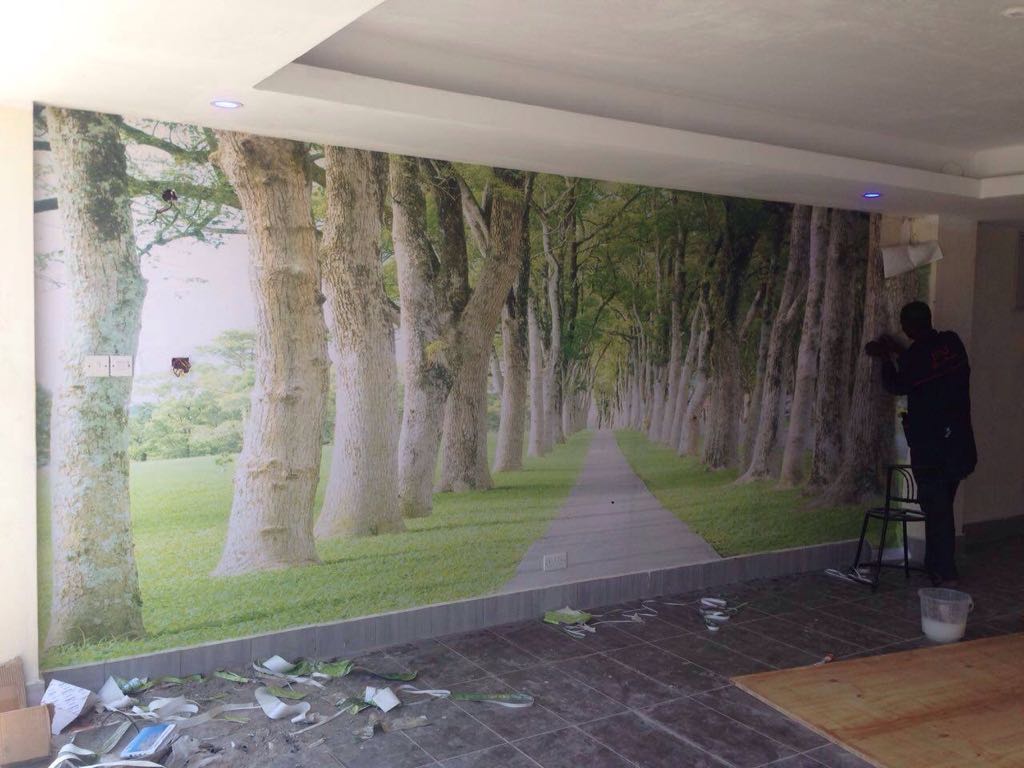
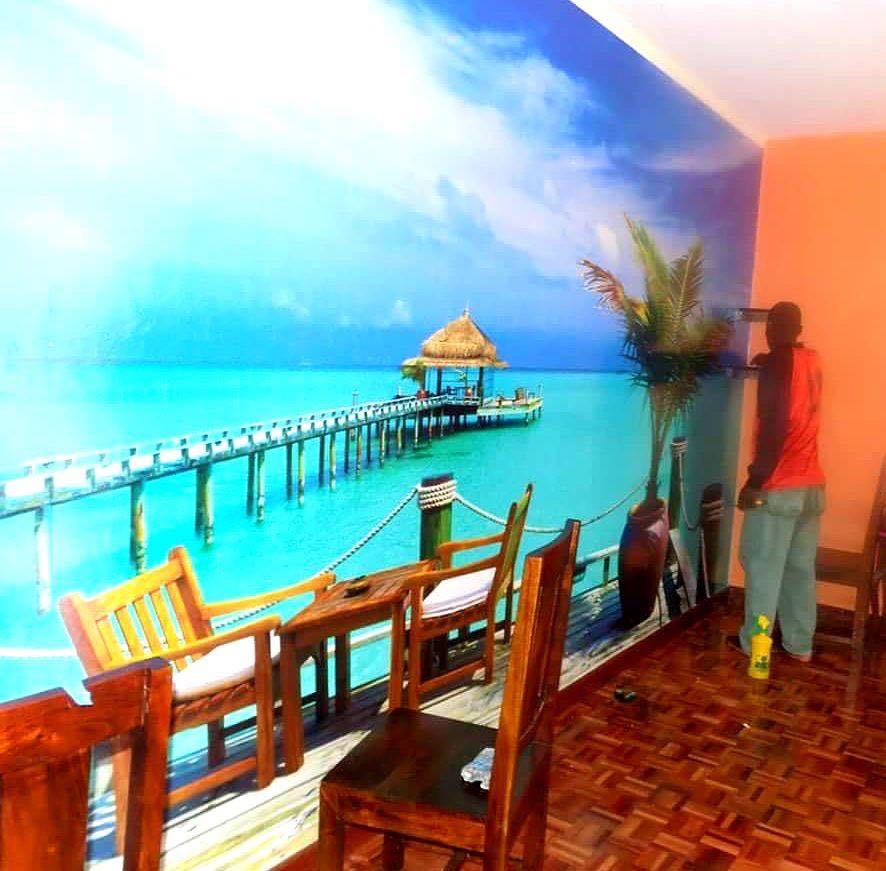
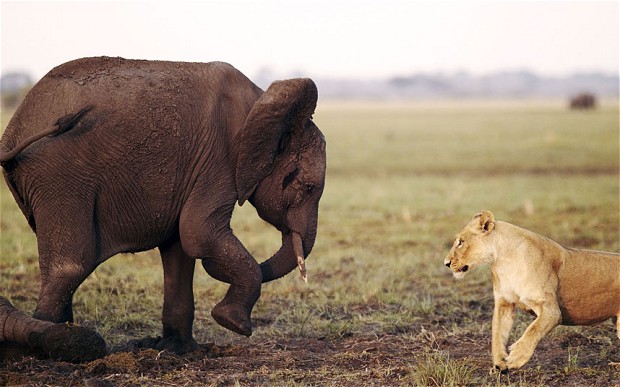
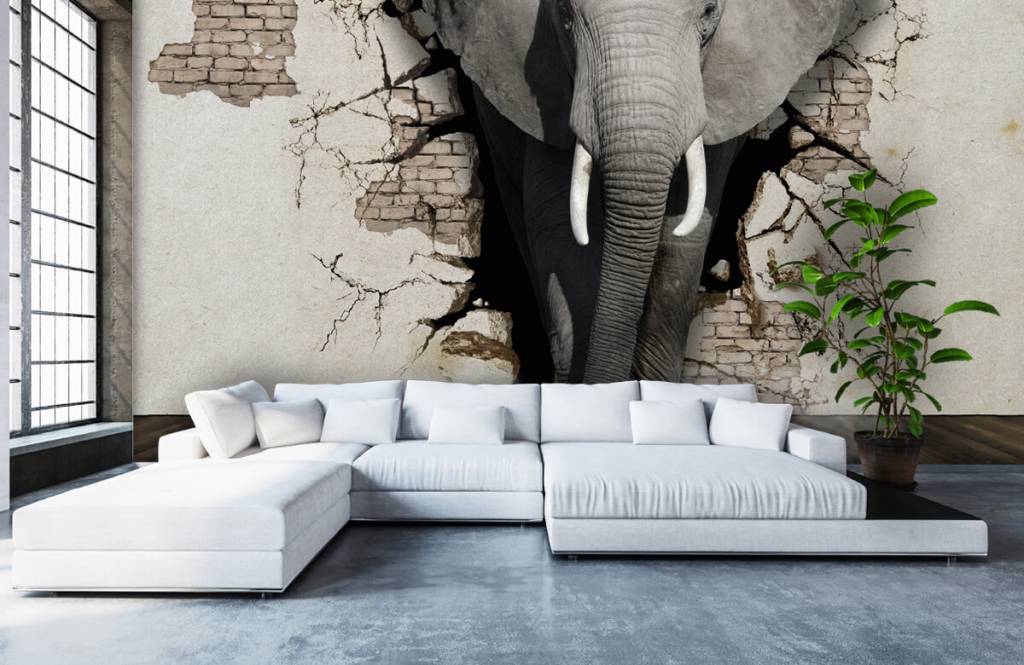

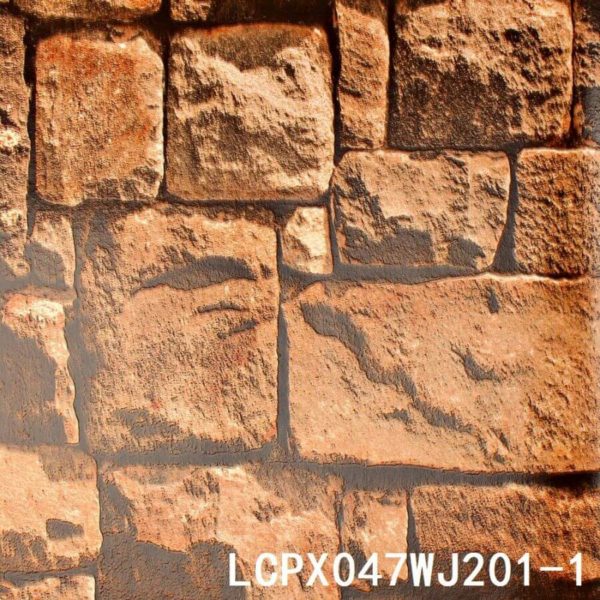
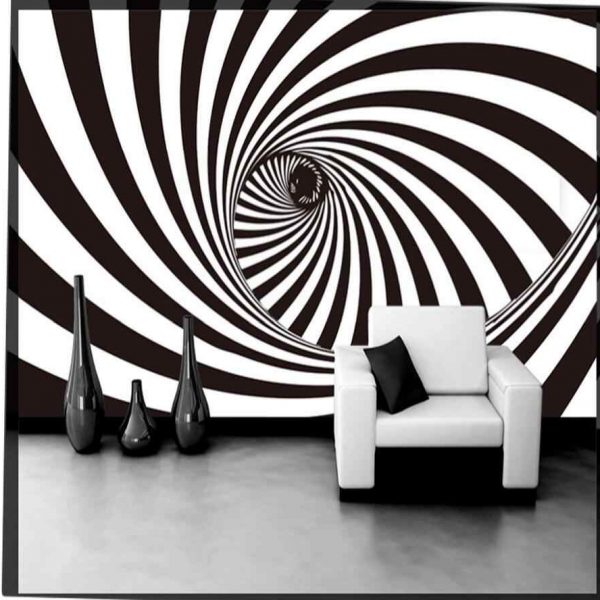
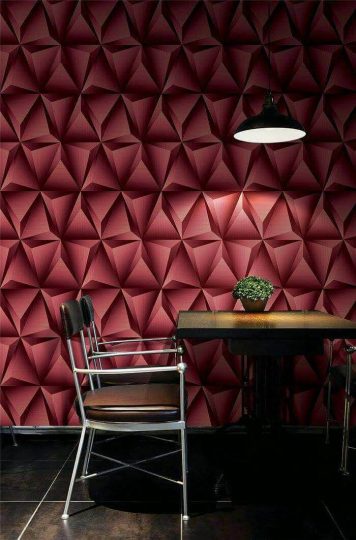
Reviews
There are no reviews yet.